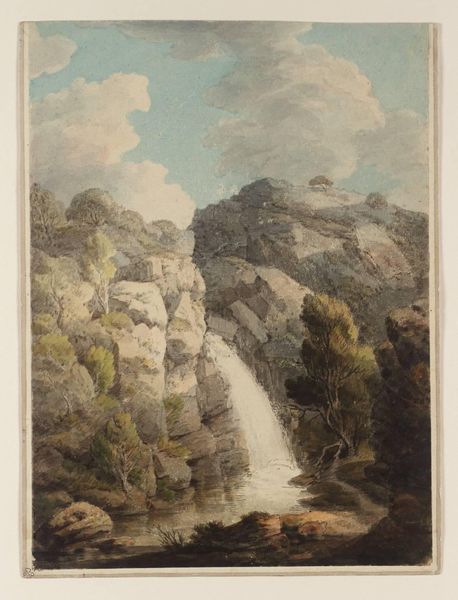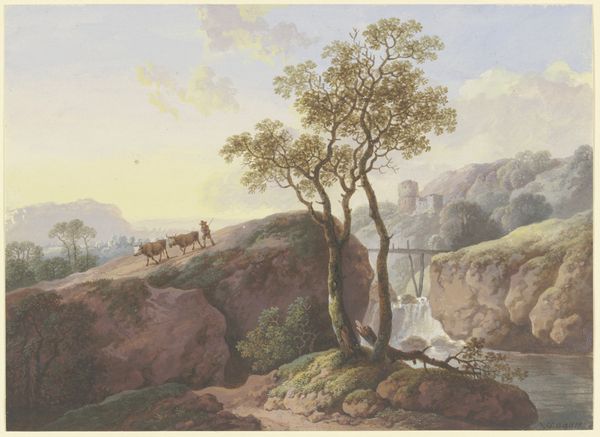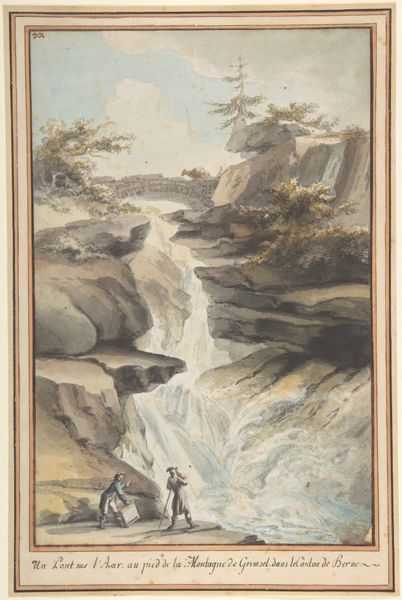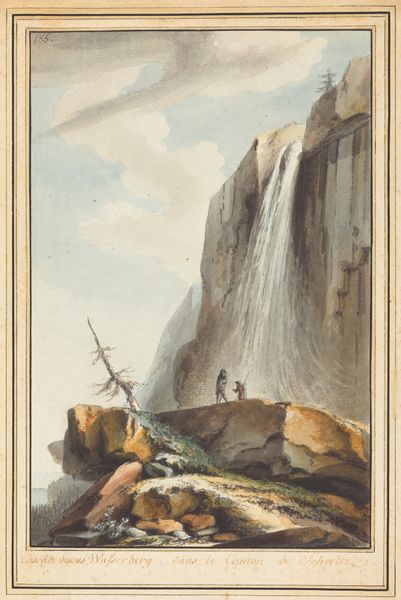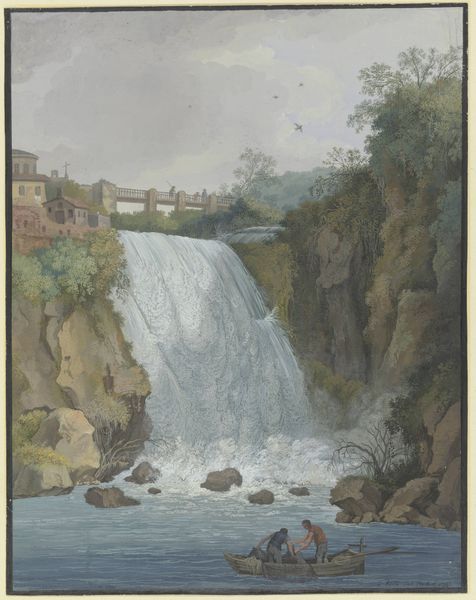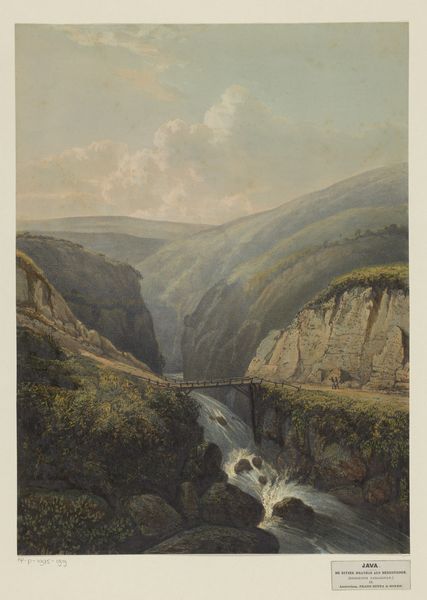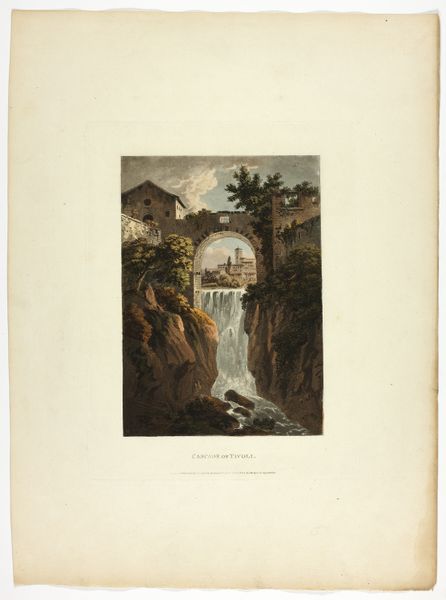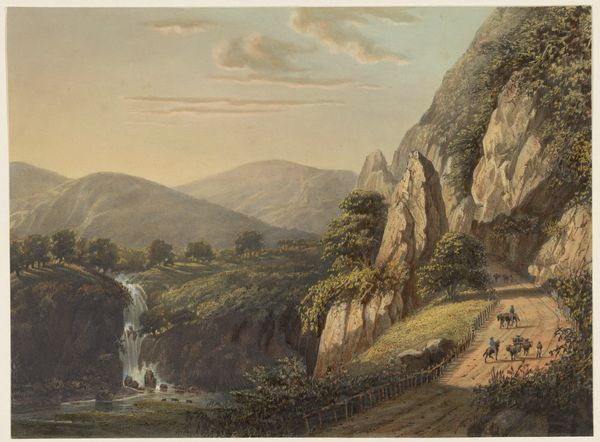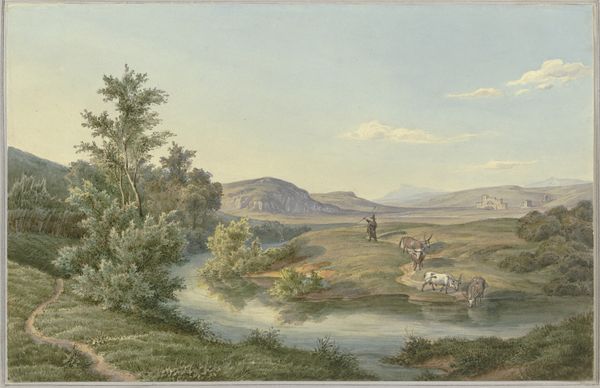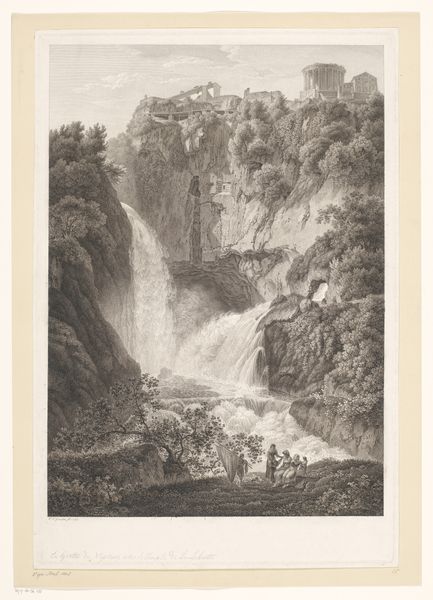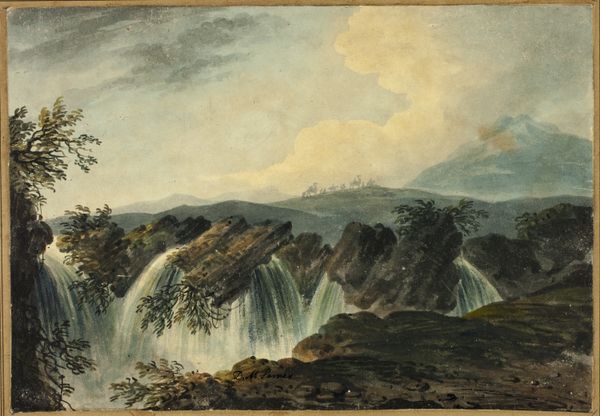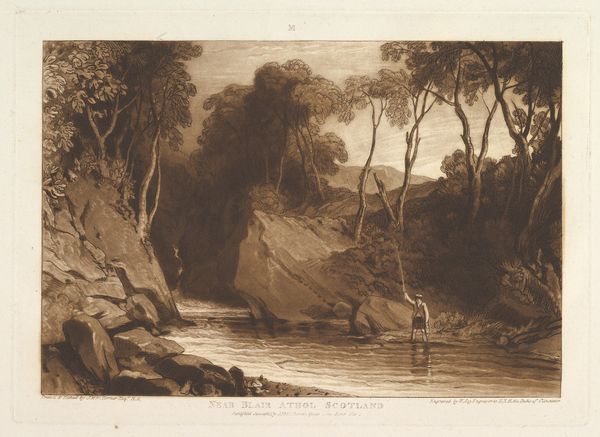
watercolor
#
landscape
#
waterfall
#
watercolor
#
watercolour illustration
Dimensions: height 360 mm, width 270 mm
Copyright: Rijks Museum: Open Domain
Curator: Here we have Johan Conrad Greive's "Gezicht op de waterval in Singahan," a watercolor from 1869, currently residing at the Rijksmuseum. It offers a striking view of a waterfall in, as the title indicates, Singahan. Editor: My initial reaction is, wow, that's serene. There’s this misty quality to the whole scene that's incredibly calming. And the waterfall itself, like a veil... it’s really captivating. But something feels a bit too composed, almost like a stage set. Curator: Precisely! Think about the colonial context of Dutch artists depicting Indonesia. Watercolors like this were not simply objective landscapes. They played a role in constructing a vision of the "exotic" East. These romanticized landscapes frequently sidelined the harsh realities of colonialism. Consider the subdued portrayal of the local people present here and compare it with the sublime natural landscape. Editor: I see what you mean. The figures seem almost decorative, blending into the landscape. It’s as though they are part of the exotic "furniture." And all the dogs add to that idealized pastoral mood, very Western European, I’d say. The artist seems to impose a narrative rather than showing raw existence. Curator: Yes, these depictions often functioned to justify colonial endeavors. The beauty masked systemic inequalities and power dynamics. Also, remember the art movement of the time was Romanticism which further prompted artists to add a particular emphasis on feelings and the beauty of nature to its narrative. The composition serves the political agenda of romanticising Java for viewers in Europe. Editor: Right, the perspective flattens the complex narratives. You are left wondering what a truly indigenous perspective would be, completely different perhaps. Looking at the waterfall now I feel the political undertones to it, because initially the beautiful thing is what stood out to me! Ironic isn't it. Curator: Exactly. Recognizing the historical context and these dynamics is crucial. It transforms how we perceive the piece—revealing the layers of representation, ideology, and even propaganda, woven into the watercolor’s beauty. Editor: Well, I won’t look at tranquil landscapes the same way again. A peaceful waterfall has turned into a silent statement, a conversation starter about representation and historical truth.
Comments
No comments
Be the first to comment and join the conversation on the ultimate creative platform.
